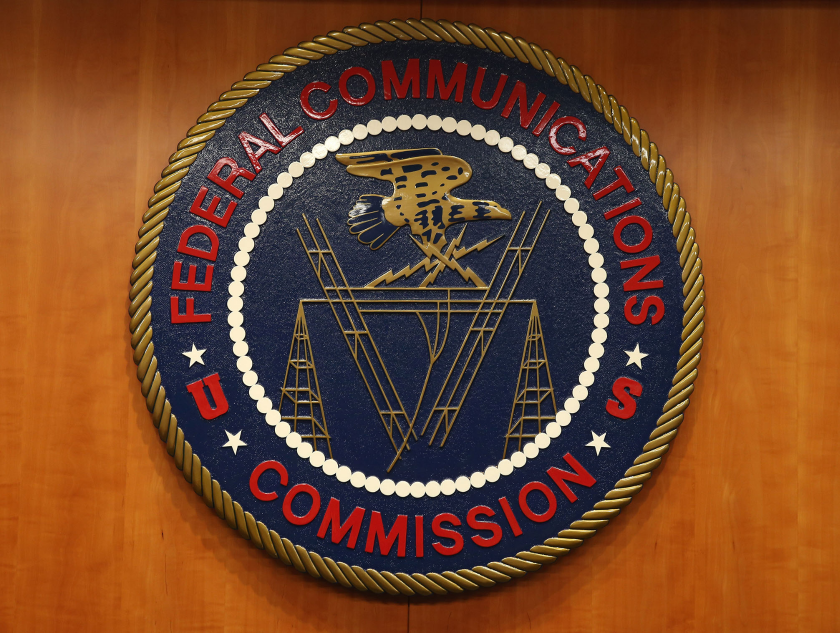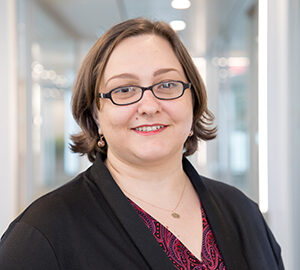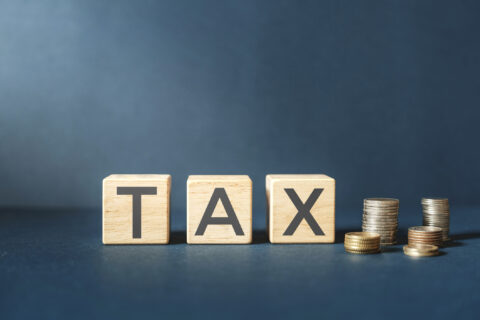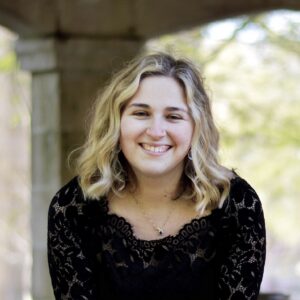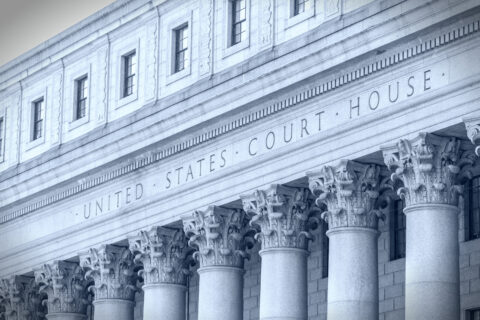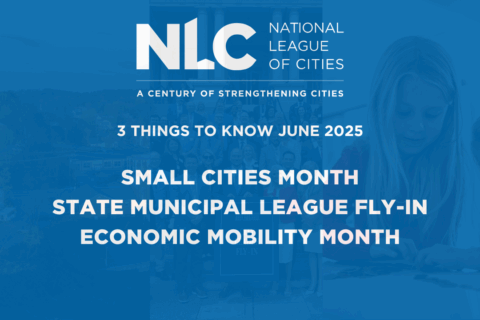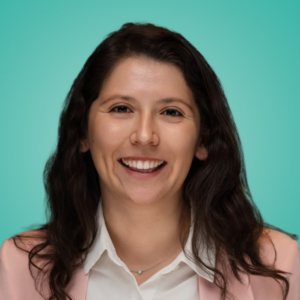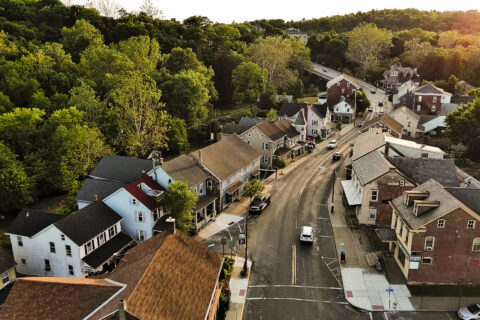On February 26, the Federal Communications Commission (FCC) announced through a Report and Order the rules for a new Emergency Broadband Benefit (EBB), funded for a one-time amount of $3.2 billion, which will be available until expended or until six months after the COVID-19 emergency declaration expires. The EBB provides eligible low-income households with a monthly $50 discount for broadband service from participating providers, as well as a one-time $100 discount on an internet-enabled device. This includes any household with a resident who:
- currently receives the federal Lifeline telephone benefit,
- is approved for the free or reduced-price school program,
- experienced a substantial job or income loss since February 29, 2020, or
- received a Pell grant in the current academic year.
Cities will have a key role to play in the implementation of this emergency program. While only cities with municipal broadband utilities will be eligible to participate directly as providers, local leaders can and should work with local internet service providers, community organizations, and local and regional government agencies to make sure that all potential participants are aware and able to take advantage of the program.
Cities should work with their local ISPs, particularly those that may not already be participating in the federal Lifeline telephone subsidy, to make sure they are encouraged to opt-in and are able to access training and information about how to enroll in necessary federal systems.
Local leaders must also serve as trusted providers of information for residents who may benefit from the program, and the organizations that serve them. While the FCC has been charged with developing educational materials and resources in a variety of formats and languages to inform the public about the broadband benefit and how to access it, local leaders know their communities and residents best.
Cities should plan to communicate closely with housing agencies, schools, food banks, faith-based organizations, clinics and other organizations providing services to low-income residents to ensure that they have timely, useful information about how to enroll in the EBB, how to assist residents and their broadband providers with providing any necessary documentation to verify eligibility, and how to identify and avoid scams.
The National League of Cities (NLC) and numerous local governments and locally-focused organizations participated in the accelerated comment period in January and early February. The FCC has recognized that local governments are a critical partner for the EBB’s success by citing these comments throughout the Report and Order. NLC is committed to providing support and information to cities about official updates to the program, best practices specific to cities, and advocacy to the FCC on behalf of local governments and municipal broadband providers as the EBB continues to roll out.
For the latest updates from the FCC, including an informational listserv, past and upcoming educational events, and documentation, visit fcc.gov/broadbandbenefit.
What Internet Service Providers May Participate?
Internet Service Providers (ISPs) participating in the program may offer broadband through a variety of technologies. In order to participate in the program, they must either already be an eligible telecommunications carrier (ETC) through the USAC system or designated as such by a state, or they must go through an expedited approval process with the FCC. They must also be able to prove, through FCC Form 477 filings or other documentation, that they offered retail broadband service to end-users as of December 1, 2020. Community-owned networks, cooperatives and municipal ISPs are all explicitly included as eligible participants, as long as they meet all other eligibility requirements. Broadband providers not already in the USAC system as ETCs will need to first apply for approval from the FCC, then file an election to participate with USAC.
The Report and Order notes that by March 5, the Wireline Competition Bureau will release a timeline for submission of information for non-ETC provider pre-approval to participate as soon as the program begins. The EBB start date is not expected to be announced at that time, but the FCC anticipates that the program and household enrollment will begin within 60 days.
The FCC agreed with the request from NLC and others that it should require participating providers to offer the EBB benefit throughout their approved service area but declined to require expansion of a service footprint or for providers to offer the EBB on all service offerings – just at least one offered as of December 1, 2020.
Which Households Are Eligible for the Benefit?
Households are eligible to receive the EBB discount if at least one household member fulfills the following:
- meet the criteria for participation in the Lifeline program,
- has applied for and been approved to participate in the free and reduced-price school lunch program,
- has experienced a documented substantial loss of income since February 29, 2020 such as layoff or furlough notice, application for unemployment benefits or similar (excluding those households that had a 2020 income of greater than $99,000 for single filers and $198,000 for joint filers);
- has received a Pell Grant in the current award year, or
- meets the eligibility for a broadband provider’s existing low-income or COVID-19 program as approved by the FCC.
The FCC has directed USAC, as the administrator of the program, to make its National Verifier program available to participating providers and has also directed the establishment of data sharing agreements between USAC and other relevant federal and state data sources to automate eligibility verification as much as possible. It also lays out a series of alternative documentation options for households to prove eligibility. Participating Lifeline recipients, as long as they are already enrolled in the National Lifeline Accountability Database, will not have to establish EBB eligibility, but will need to opt in to EBB. Providers, local governments and community organizations may need to assist households in establishing and documenting eligibility and navigating the USAC systems.
The FCC agreed with NLC and numerous other commenters that households with students in districts participating in the Community Eligibility Provision for free reduced-price lunch should be eligible for the EBB, even if the household had not directly applied for and received approval for participation in the lunch program. Further, households qualifying through the free lunch provision will be eligible if they enrolled in the program or qualified for the Community Eligibility Provision in either the 2019-2020 school year, or the 2020-2021 school year.
How are Local Bulk Purchases or Subsidies Handled?
While the Report and Order acknowledged the concerns raised by NLC and other commenters about how to intersect with community programs that offer subsidized or bulk-purchase discounts on service, it did not fully address these concerns. The Order specifies that the discount may be applied for services in which the household pays some amount, as is the case for households currently receiving service at a bulk rate negotiated by a housing authority, local government, or other entity, or if a local government or other organization is providing funding to partially offset the cost of the service. However, households that receive the service for free because of full subsidy by local governments or other organizations would not be eligible. NLC is seeking further clarification to ensure that localities that proactively sought these arrangements for students or other vulnerable populations over the past year are not unfairly penalized for their quick action.
What Do Households Receive?
Eligible and enrolled households will receive a monthly $50 discount off the price of broadband service and associated equipment, such as leased antennas or routers. This excludes optional add-ons, such as wi-fi extenders or repeaters. They can also receive a one-time $100 discount off of a connected device, such as a laptop or tablet, from their provider. This discount excludes smartphones or tablets that can make cellular calls, the device must be provided by a participating EBB provider, and the household must pay a co-pay of between $10 and $50. The EBB discount is also not eligible for bundled offerings that include video service, although it is eligible for bundles that include voice or text service.
There are no minimum device standards or broadband service speeds required for eligibility for the program, so community leaders should communicate actively with residents, area ISPs, employers, and school districts to help ensure the widest possible range of services are available and that households are able to choose devices that meet their needs for participation in classes, work, or telehealth services.
What Consumer Protections Are Included?
Participation by any household member in the Lifeline program, and the existence of any bad debt to any broadband provider, do not impact eligibility. Households may receive the Lifeline benefit and the EBB simultaneously. Households may not be charged an early termination fee if they cancel their service while receiving the EBB discount.
Providers will be required to give consumers certain information when they sign up for service that includes an EBB discount. They are not required to provide notice to consumers on how to file complaints, so community leaders and organizations should provide information to residents about the FCC’s complaint hotline and online complaint filing systems or call 1-888-225-5322.
NLC and other commenters were recognized for raising concerns about the program ending and transitioning providers and beneficiaries out of the EBB program without surprise higher bills. The FCC and USAC are committed to providing regular assessments and updates on the fund’s usage and predict when the fund will be exhausted. This public tracker will work to forecast when claims can no longer be fully paid about 75-90 days out.
Providers must notify and gain consent from consumers at sign-up about the fact that subsidy is temporary and that consumers will be subject to regular terms and conditions at the EBB’s end. Providers will also be required to give notice to consumers in a prominent way on bills or other monthly communications about the last date or service month in which the benefit will apply, the anticipated rate service will cost without the EBB, at least 30 days before a billing change. Subscribers must opt-in to either continuing the same service without the discount or transitioning to a new service.
Promoting Awareness
The Order directs FCC bureaus and USAC to develop education and training for providers and to conduct consumer outreach. However, the administrative budget for this program is limited, and the Order strongly encourages local governments and civic organizations to take an active role.
Local governments should familiarize themselves with resources available to and requirements being made of providers, and actively work with area ISPs to ensure that:
- they intend to elect into the EBB program,
- they intend to offer adequate subscription options to EBB recipients, and
- if they intend to offer a subsidized device, that it meets the needs of local residents.
Local governments should work to publicize the benefit to eligible households. The FCC’s Consumer and Governmental Affairs Bureau has been directed to develop materials to advertise the program in a variety of languages, in digital and printable formats, to be used by organizations and the public. However, local leaders should be prepared to take local ownership of this outreach and serve as a conduit for information community organizations already providing assistance to eligible households. This includes housing agencies and organizations, food banks and nutritional assistance organizations, transportation entities, healthcare providers and clinics, schools, libraries, and faith-based organization.
Local leaders can serve as eyes on the ground to provide accurate information, reassurance and protection from scams or bad service. Local governments should make sure that residents and community organizations have information, either direct from the FCC or repurposed to meet local needs, about what their rights are as consumers, what obligations they have to provide documentation for eligibility, and how to file complaints with the FCC if they experience problems.
Communities have leveraged a host of traditional and new methods to communicate with vulnerable residents throughout the COVID-19 pandemic about public health and community support information. Cities should consider using these same channels for information about the EBB, including broadcasts, bill inserts in municipal utilities, emails, websites, social media, or other tactics.
